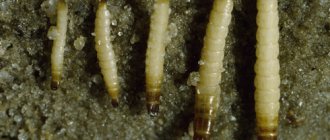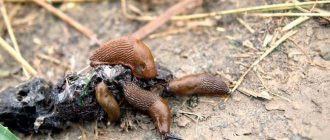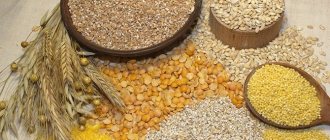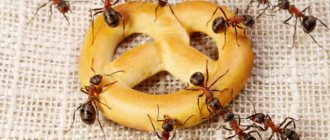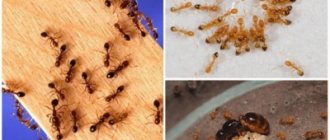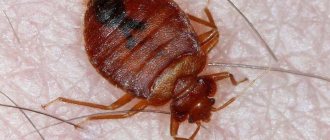The appearance of a wireworm on a site is difficult to confuse with anything else. This pest undermines tubers and shoots of plants, and it is not easy to get it, because it can burrow into the ground to a depth of several meters. But even such a scourge can be fought.
The wireworm is not such a “promoted” enemy of potatoes as the Colorado potato beetle. They write a lot about the latter and every season they advertise another new means of control that is “guaranteed to get rid of the beetle.” And it seems that no one cares about the inconspicuous click beetles and their larvae - wireworms. That is why their biology has been poorly studied, and control measures are few and ineffective. Yes, and it is not possible to detect the wireworm right away, and when it catches the eye of gardeners, the plant usually cannot be saved. However, you can fight this scourge. But let's study it in detail first.
What does a wireworm look like and why is it dangerous?
Adults - click beetles - are small, up to 20 mm in length, oblong, spindle-shaped insects. They have a dark brown, brown or deep purple body color. The flight of beetles continues from spring until early August. Click beetles feed on the leaves of cereal plants and do not cause much damage. During the season, the female lays up to 200 eggs, and it is from these that the main enemy of potato plantings, the wireworm larva, appears.
In addition to the huge number of “freeloaders” with which your site is instantly filled, another problem appears. Click beetle larvae, or wireworms, as they are also called, are real long-livers of the insect world. They live quietly in the soil for up to 5 years, provided the climate is suitable and food is available. It is very difficult to detect them - wireworms make deep and winding passages, hiding from any threat.
The larvae of the first year of life are practically not dangerous - they are still small and cannot harm plants. The maximum threat is posed by 2-4 year old larvae. They grow up to 20-30 mm, becoming like strong worms with clearly segmented bodies. Their color changes from light yellow to brown, and the body hardens (the wireworm is very difficult to crush, it’s easier to tear it in half).
The wireworm is an omnivore; it doesn’t matter what it eats. Literally everything suits him: potatoes, tomatoes, carrots, onions, cabbage, beets, corn, wheat, rye, etc. It also does not matter at what stage of development the plant is - whether it is a planted seed or a tuber. Wireworms damage roots, young shoots, stems - in short, everything they can “get to”. Crop losses amount to 65-80%, and it is possible that the situation will repeat itself next year, because the larvae remain over the winter, and in the spring they begin to eat plants with renewed vigor.
Biological characteristics of the pest
The larva of the click beetle is called a wireworm; it poses a danger to plantings. Their life cycle begins at the egg stage, with females laying dozens of them during the spring and summer. One individual is capable of laying up to 200 pieces per season. The eggs hatch into worm-like larvae with delicate skin. The first year they are inactive and almost safe. They eat very little and do not leave the nest. Starting next year, the worms become active and very voracious.
They eat everything that grows near them. They love root vegetables, especially potatoes, beets, and carrots. The larva lives for about five years. During this time, it acquires a chitinous shell of brown or dark yellow color with clear segments. The older the pest, the stronger its protective coating. It is almost impossible to crush it. The grown worm actively moves, although only deeper. It can go down a meter and a half into the soil. He does not leave his food supply. Movements to the sides are very small, no further than 200-300 mm.
For the winter, the worm “buries itself” deeper and calmly survives the cold. Even severe frosts are not scary for him. In the spring, it rises up and begins to destroy plants planted near it. The older the individual, the more it eats, therefore, the more harm it causes. It is very important to notice the worms in time and start fighting them.
- Landscape
What to plant along the fence at the dacha: a selection of trees, flowers and shrubs
How to detect wireworms on the site
Of all the crops, the wireworm loves potatoes most and damages its tubers the most. You can understand that you will not be the first to enjoy potatoes grown on your own plot by several signs:
- freshly dug tubers are dotted with narrow through holes and small dark depressions on the skin;
- if single damaged and wilted plants begin to appear among healthy potato bushes, wireworms are clearly involved. The fact is that the larva migrates well in the vertical direction (burrowing to a depth of 1-2 m), but poorly in the horizontal direction. It does not move further than 20 cm from the feeding site, so it usually damages individual plants, rarely entire strips or beds;
- individual wireworm specimens can be accidentally dug up while working in the garden. During the period of activity, the wireworm lives in the upper layers of the soil, at a depth of 5-10 cm. Adults are very similar to useful ground beetles, but they can be distinguished by the characteristic click that the bug makes when it turns over from its back to its abdomen.
Signs of parasitism on vegetable and fruit crops
The wireworm is an underground dweller. It can be discovered when digging up an area, when the larvae are thrown to the surface.
Secondary signs:
- The seeds do not germinate. When the holes are dug out, damage is visible.
- The seedlings are withering. The parasite eats up young roots, preventing the plant from developing.
- On root crops and potatoes, subtle movements made by the pest are noticeable.
It is difficult to detect wireworms in plantings of potatoes and root crops without tilling the soil or digging up the fruits. The larvae eat individual bushes without going far, and there is practically no permanent damage. Affected plants wilt. Pests are also noticed when loosening the beds, when they appear on the surface.
The peculiarity of wireworms is that they move vertically in the soil, but only slightly in the horizontal direction.
Preventive measures to combat wireworms
Avoiding the appearance of wireworms on a site is easier than dealing with its large population. To do this, you need to apply a number of preventive measures:
- observe crop rotation - this is especially important when planting potatoes. Often a certain plot of land is allocated for it and potatoes are planted there year after year, surprised by the constant crop failure;
- harvest root crops on time and do not leave them for the winter - by eliminating the source of food and heat, you will deprive the wireworm of a comfortable wintering;
- reduce the acidity of the soil - you can determine that the soil has become highly acidic by looking at the indicator plants growing on the site, for example, horsetail, sorrel and plantain;
- attract wireworm and click beetle enemies to the area . First of all, these are birds. Starlings, crows, blackbirds, doves, rooks, wagtails and tits are especially fond of wireworms. The main means of attracting birds to the site are birdhouses. They destroy wireworms and ground beetles, which are carnivorous insects and happily feed on their “brethren”;
- destroy weeds . Burdocks and wheatgrass are a ready “home” for the larvae of the click beetle. Therefore, they need to be destroyed first, just like any other weeds;
Why wireworms settle in our areas and how to discourage them
We can poison wireworms with chemicals, water them with “harmless” potassium permanganate, scare them away with orange peels, and the pests will indeed leave our areas. But as soon as you stop this fight, deciding that victory has been won, the enemy will definitely return, because here there are favorable conditions for him:
- There are pieces of virgin soil left, tree trunk circles, paths are turfed, there is a lawn, etc. The roots of perennial grasses are the natural habitat for wireworms. If you like to leave such places, then do not plant potatoes next to them.
- The tops and weeds are not removed; underneath them it is always quiet and humid—what the pest needs to hide and lay eggs in the spring.
- The soil is not loosened in the spring and is not disturbed at all until it is time to plant potatoes. But the eggs lie only at a depth of 2 cm. If you don’t rake, you’ll get hordes of worms that will feed on the site for 3–5 years in a row, and so on for each new generation.
- The earth does not deoxidize, no ash, fluff lime or dolomite flour is added; It happens that it is introduced, but not in the volumes that are recommended. Ash needs from 300 kg per hundred square meters, fluff and dolomite flour - 350–600 g/m².
- There is no crop rotation. Growing potatoes in one place for many years, we ourselves introduce wireworms. Food is always served to them: in the fall, having eaten, they go deeper into the winter for the winter, in the spring they wake up, and there are potatoes in the holes again. For the sake of such a feast, they are ready to put up with ashes, and no fragrant scarers will lead them astray from the already laid route.
- Cereal green manures are grown, but their roots are a delicacy for wireworms. Sow mustard, phacelia, lupine, beans, peas, vetch; wireworms do not like them.
- There are few insect predators that eat the larvae and eggs of the click beetle, because they poisoned them with chemicals and poured aggressive solutions on all soil inhabitants indiscriminately. We also kill beneficial insects by digging in the fall, turning over the layers and leaving them to freeze out along with the wireworms. There will be more benefits if you catch the larvae while digging potatoes. At this time they all gather in the holes and gorge themselves for the winter.
If your site has at least one of the conditions listed above, wireworms will settle on it, only their numbers can change: the more comfortable the pests live, the better they grow and reproduce.
Once upon a time I read in the Pest Guide that the most effective and environmentally friendly way to combat wireworms is to improve and enrich the soil. – This is an AXIOM
Olga Aleseevna
https://forum.tvoysad.ru/viewtopic.php?t=6447&start=15
Video: work on the site in the fall, after harvesting potatoes
What repels wireworms
Click beetles and wireworms are repelled by the following crops:
- green manure - wireworms do not like mustard, so plant it in the fall, wait until it grows to 10 cm, then cut it and put it in the ground for the winter. Repeat this operation in early spring and also plow mustard into the soil. A rotted plant releases essential oils that repel wireworms. You can also plant rapeseed, rapeseed, buckwheat, spinach and sweet clover;
- legumes next to potatoes . For some reason, the omnivorous wireworm does not favor peas, beans and beans. In addition, these plants will additionally enrich the soil with nitrogen;
- It is believed that the wireworm cannot tolerate the aroma of dahlias. Even wheatgrass cannot stand proximity to these flowers.
Potato wireworm: what is it?
Wireworms are the larvae of all types of click beetles. Potatoes and other vegetable crops are parasitized mainly by representatives of the genera Limonius, Melanotus, Agriotes, Selatosomus. If the Colorado potato beetle eats potato tops, the wireworm infects the tubers. It is very difficult to determine its quantity on the site, which makes it difficult to destroy the pest.
The appearance of larvae can be detected using the following criteria:
- damaged root system of various vegetables, wheatgrass weed and potatoes;
- passages and rotten areas are clearly visible on the potatoes;
- detection of yellow or brownish worms in the soil;
- reduction in crop yields and plant growth rates.
Attention!
When potatoes are damaged, rotting begins in the soil, which favors the proliferation of pathogenic microorganisms and pests that destroy potatoes. These include nematodes, pathogenic fungi and putrefactive bacteria.
Baits and traps against wireworms
The wireworm is willingly “led” to all kinds of traps. This feature has long been successfully used by lovers of non-chemical pest control products.
- Take old (spoiled) potatoes and soak them in any insecticide for 24 hours. Then bury it in the ground in places where wireworms accumulate and mark these places with sticks. After two days, collect the potatoes into which the wireworm has crawled and destroy them.
- Place pieces of potatoes or carrots in an unnecessary glass jar with a capacity of up to 0.5 liters and bury them, leaving the neck at ground level. Both larvae and adults will fall into such an improvised trap. The latter, however, can fly away, so it’s better to cover the neck with paper - then it will be more difficult for the insect to get out.
- You can also string pieces of potatoes, beets and carrots onto a wire. In the spring, before planting vegetables, bury such a “kebab” in the ground to a depth of 10 cm along the entire length of the bed. After 2-3 days you will receive an excellent treat for chickens, consisting of larvae and vegetables.
- Click beetles hide during the day in moist and shady places. Lure them in the spring with piles of grass or manure, and a few days later, during daylight hours, collect them and throw them into the fire. Do the same in the fall, just let the grass and manure sit until the cold weather.
- The permanent location of wireworms is young seedlings of corn, oats, barley and wheat. 1.5-2 weeks before planting potatoes, you can sow a small number of these crops and then dig them up along with the pests. New plants can be planted throughout the summer by pre-treating the seeds with an insecticide. Wireworms die from such a poisonous treat. The main thing is not to forget that the plant is inedible and cannot be eaten.
How to prevent it from appearing on a potato plot
To prevent the problem, you should adhere to the following recommendations:
- Do not allow the soil to become sour and overgrown with weeds, especially wheatgrass.
- Plant plants that repel click beetles next to potatoes - legumes, marigold flowers, mustard, spinach, oilseed radish.
- Maintain crop rotation, since potatoes, which grow in one place for several years in a row, deplete the soil, depriving it of nutritional components.
- Carefully loosen the soil in May and early summer so that beetle eggs fall on the soil surface and die under the influence of light.
Biological and chemical preparations against wireworms
Gardeners have been fighting wireworms for many years. Therefore, there are many methods of fighting the so-called. “biological” basis, without the use of chemicals. For example:
- Ground eggshells are one of the most versatile and budget-friendly remedies for wireworms. Lay it out throughout the site throughout the season, and the wireworm will avoid crops;
- pickle the holes before planting . Use 500 g of nettle tincture per 10 liters of water or 200 g of dandelion tincture per 10 liters of water. This amount is enough to process 20 holes for potatoes. Treat every 2-3 days for a week;
- reduce soil acidity . When digging and loosening the soil, add lime, chalk or ash, and once every few years use dolomite flour;
- add ammonium nitrate or ammonium sulfate . The use of such preparations containing ammonia forces the larvae to migrate deeper underground, escaping unfavorable conditions. It is enough to apply 20-30 g per 1 sq.m;
- water the plants with a solution of potassium permanganate at the root . A weak solution is enough - 2-4 g per 10 liters of water; add no more than 200-300 ml to one well.
We recommend using chemicals as a last resort. Excessive use of “chemistry” will not benefit your plants, so it is better not to abuse it.
Some formulations can be prepared independently.
- Spread 5 kg of granular superphosphate in a thin layer on plastic film and prepare a solution for its treatment. To do this, take one of the following drugs: Prestige (or Prestigator) – 70-100 ml, Tabu – 8 ml, Terradox – 40-100 g or Commander+ (25+25 ml) and add it to the water-acetone solution (800 ml water and 200 ml of acetone). Spray the resulting mixture with superphosphate and let it dry. The resulting preparation will be enough for an area of 100 sq.m., if the “poison” is spread using a belt method.
- In strict accordance with the instructions, you can use insecticides, such as Barguzin - 15 g per 10 sq.m, Pochin - 30 g per 10 sq.m, you can make a trap based on Zemlin (a 0.5-liter glass jar is filled three-quarters with sawdust , and then add insecticide according to the instructions).
Wireworm is a dangerous and voracious pest that can cause irreparable harm to garden crops. However, you can fight it. Only this struggle must be systematic and regular. And then the worst enemy will not dare to encroach on your harvest.
Add minerals to the soil
How else to deal with wireworm? Make living conditions unbearable. The pest loves acidic soil, which means the acidity must be reduced. The second option is to use nitrogenous fertilizers, which the wireworm really doesn’t like.
Several effective means to combat harmful worms:
- ammonium nitrate. About 30 grams are added per 1 square meter. Ammonia simply kills the larvae;
- ammonium sulfate. The application rates are the same, the impact on pests is also similar;
- potassium chloride. 10 g per square meter is enough. Use on sandy and peaty soils. Don’t worry, all harmful substances will be washed away with rain and melting snow;
- dolomite flour, lime. Apply up to a kilogram per square meter, and there will be several times fewer pests;
- chalk or wood ash. The norms and impact are the same;
- weak solution of potassium permanganate. A 10 gram bag is enough for 20 liters.
Interesting! You can catch wireworms using live bait. In the fall, after cultivating the soil, prepare baits and spread them around the area. Use manure and straw. Pests will crawl to feast on the delicacy (especially if all the weeds have been mercilessly destroyed), after the start of frost, burn the piles. And at the same time wireworms.
Prevention from wireworms in the garden
Getting rid of insatiable larvae is very difficult, and usually you have to combine all possible methods at once. Therefore, it is better to do everything from the beginning to avoid the appearance of wireworms.
— Always weed, get rid of burdocks and “garbage” plants. They become a comfortable and cozy habitat not only for click beetles, but also for other pests;
— Control the acidity of the soil and add alkaline additives in a timely manner. If more and more ferns, horsetail, sorrel or plantain appear among the weeds, this is a sure signal that it’s time to change something;
— During harvesting, remove it completely - and only then you will deal with the presentation and quality of the fruit. Don't leave bad potatoes or carrots to rot in the garden. You think that you are leaving fertilizer for the soil, but in reality you are storing winter supplies for parasites;
- Rotate the seedlings every season. This is called crop rotation - alternating crops on one field and the most important stage in any farming. This improves the properties and nutritional value of the soil, prevents erosion, the spread of weeds and diseases.
Did you like the post? Subscribe to our channel in Yandex.Zen, it really helps us in our development!
Timing and rules for site treatment
In order to permanently get rid of wireworms in a potato plot, all necessary measures should be taken together and consistently. These methods look like this:
- At the very beginning of plowing the area today, the pests will appear on the surface and die or be eaten by birds.
- In the spring, on the eve of planting, add fertilizers containing ammonia or nitrogen to the soil, and then alkalize it.
- When planting potatoes, add a little superphosphate to each hole.
- From the beginning and throughout the entire season, it is necessary to constantly weed the garden and remove weeds along with the roots.
- During the summer, regularly loosen the soil near the potato plantings so that the eggs of the click beetle are on the surface. They die in the sun.
- In the fall, the garden needs to be dug up again to remove pests from the ground.
Advice! You can purchase special soil with predatory nematodes and add it to the holes when planting root crops. These worms are harmless to humans, but can destroy pests.
